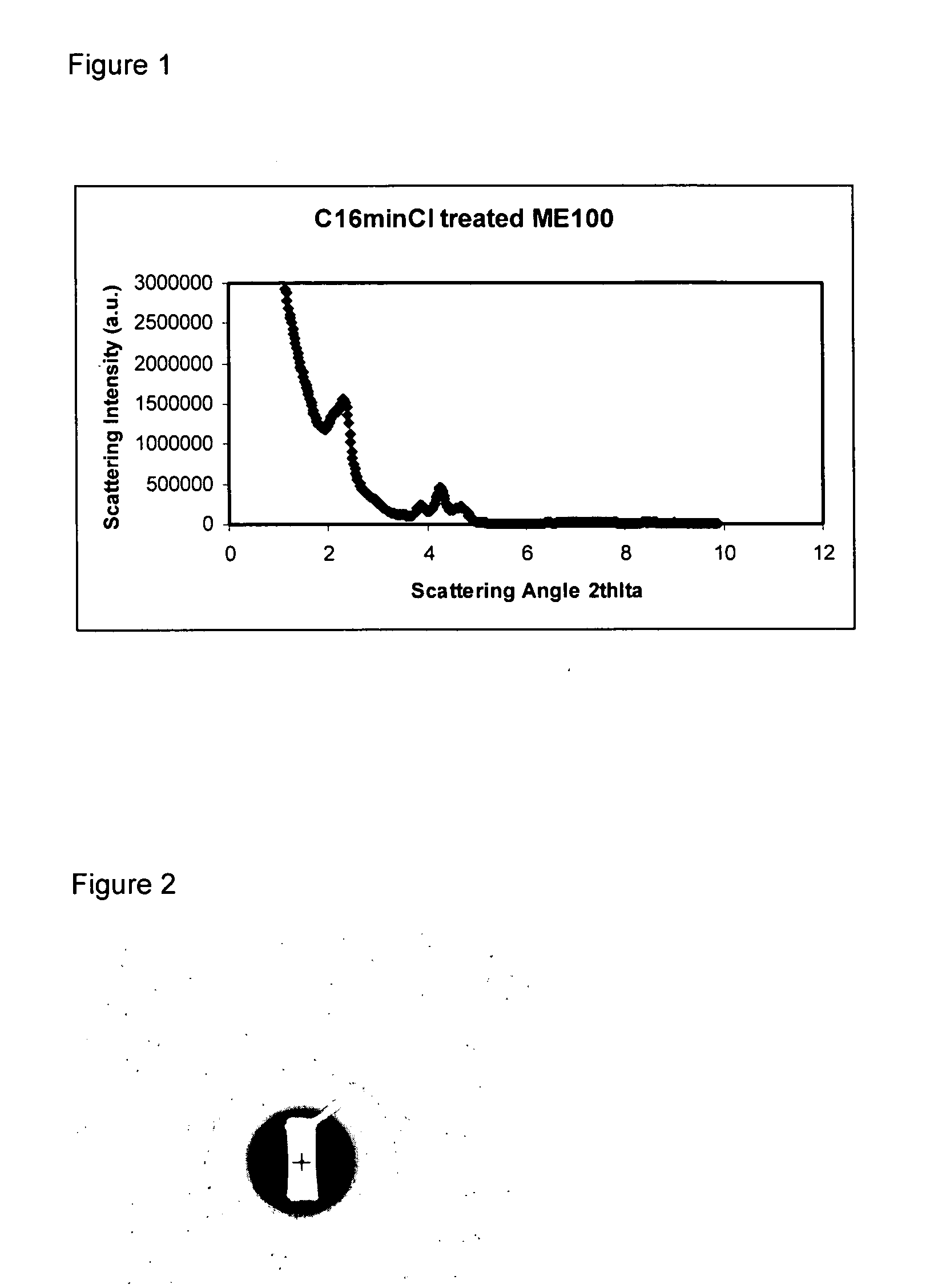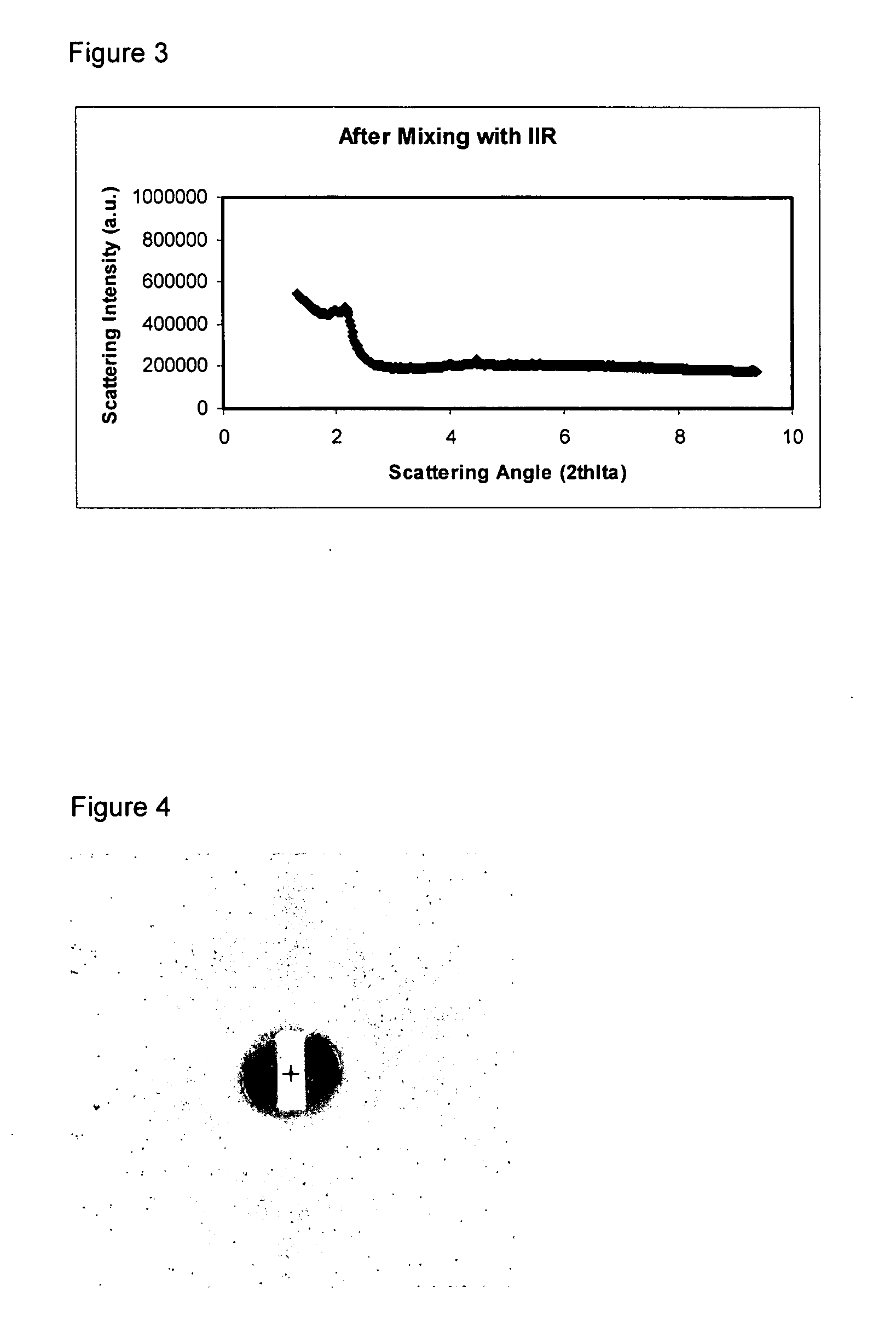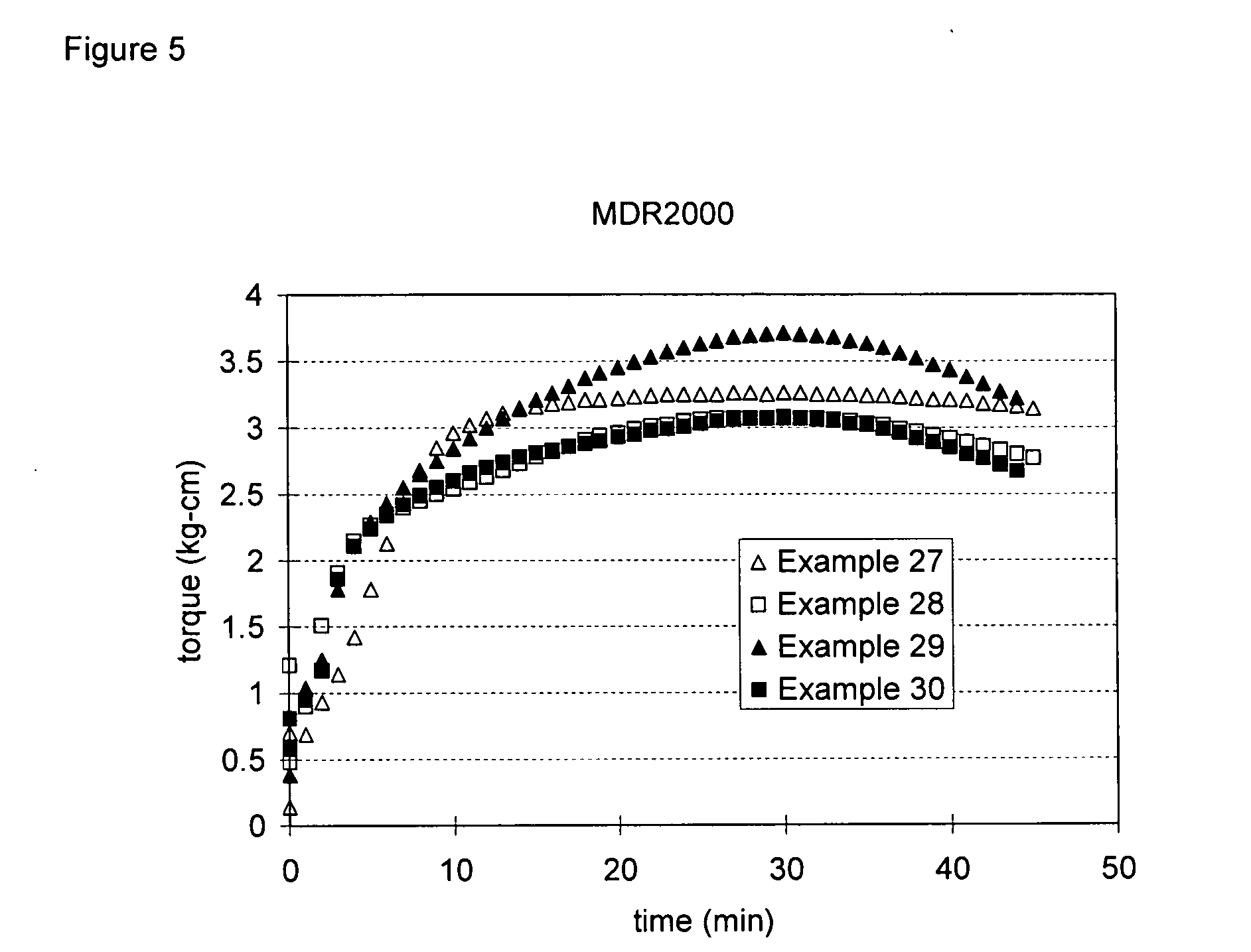Nano-composite and compositions manufactured thereof
a technology of nano-composites and compositions, applied in the field of nano-composites, can solve the problems of nano-composites notoriously difficult to obtain, oxidative degradation, chain cleavage, etc., and achieve the effects of improving gas permeability, reducing oxidative degradation, and reducing oxidative degradation
- Summary
- Abstract
- Description
- Claims
- Application Information
AI Technical Summary
Benefits of technology
Problems solved by technology
Method used
Image
Examples
example 1
Cationic Mediator of Formula (II), a Liquid Surfactant
[0046] 654 g of 1-choloroctane (Aldrich) and 360 g of 1-methylimidazal (Aldrich) were added into a 2000 mL tri-neck round-bottom flask. A refluxing / cooling column was installed on the right neck. A thermometer was installed on the left neck. To the middle neck was connected a nitrogen purging tube that delivered the nitrogen gas below the liquid phase. The reactants were mixed with vigorous stirring using magnetic agitation at a temperature between 75 and 80° C. After 8 hours, the solution in the flask turned into a milk-like mixture. After two days, the mixture in the flask turned homogenous again. The reaction was continued for three days. Then, the product was washed with ethyl acetate five times and toluene three times. Thereafter, it was dried in vacuum for three days.
example 2
Cationic Mediator of Formula (III), a Liquid Surfactant
[0047] The procedure of Example 1 was repeated with minor changes. 868 g of 1-cholorohexadecane (Aldrich) and 570 g of 1-methylimidazal (Aldrich) were added into a 2000 mL tri-neck round-bottom flask. The reaction temperature was set to 95 to 100° C. After four hours, the milk-like solution transformed into a homogenous solution. The reaction was continued for three days. The post-treatment was the same as Example 1.
example 3
Organo-Mica
[0048] 60 g of the product from Example 1, 40 g of ME-100 (Coop Chemicals, Tokyo, Japan), and 800 g of deionized water were mixed together and shaken for about 16 hours. The organo-treated mica was collected through vacuum-filtration. The treated mica was further washed with isopropenol three times, and was then dried in vacuum. The clay contained 28.77% of organo-matter (i.e., the surfactant), as measured by thermo-gravity analysis (TGA). TGA was carried out on equipment manufactured by TA Instruments and Perkin Elmer, among others.
PUM
| Property | Measurement | Unit |
|---|---|---|
| temperatures | aaaaa | aaaaa |
| temperatures | aaaaa | aaaaa |
| temperatures | aaaaa | aaaaa |
Abstract
Description
Claims
Application Information
 Login to View More
Login to View More - R&D
- Intellectual Property
- Life Sciences
- Materials
- Tech Scout
- Unparalleled Data Quality
- Higher Quality Content
- 60% Fewer Hallucinations
Browse by: Latest US Patents, China's latest patents, Technical Efficacy Thesaurus, Application Domain, Technology Topic, Popular Technical Reports.
© 2025 PatSnap. All rights reserved.Legal|Privacy policy|Modern Slavery Act Transparency Statement|Sitemap|About US| Contact US: help@patsnap.com



